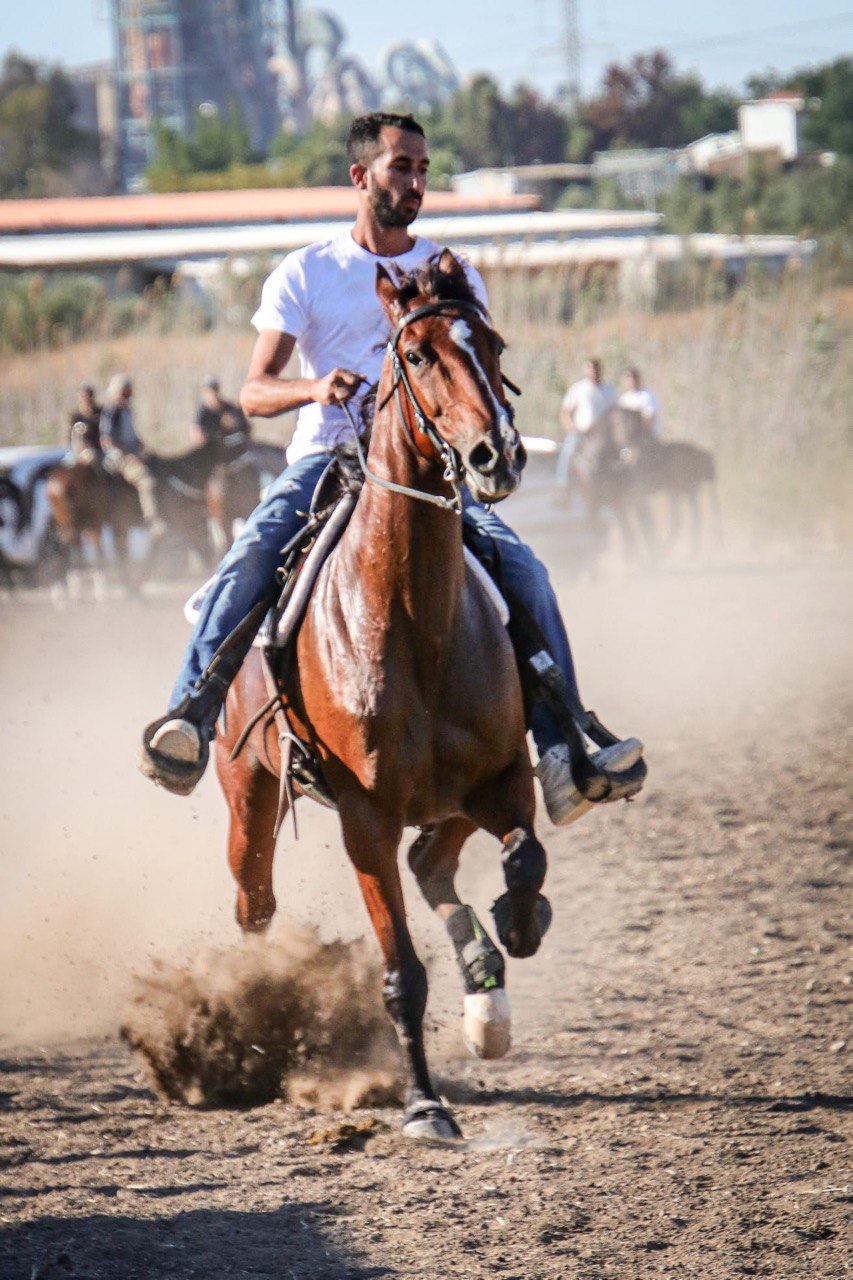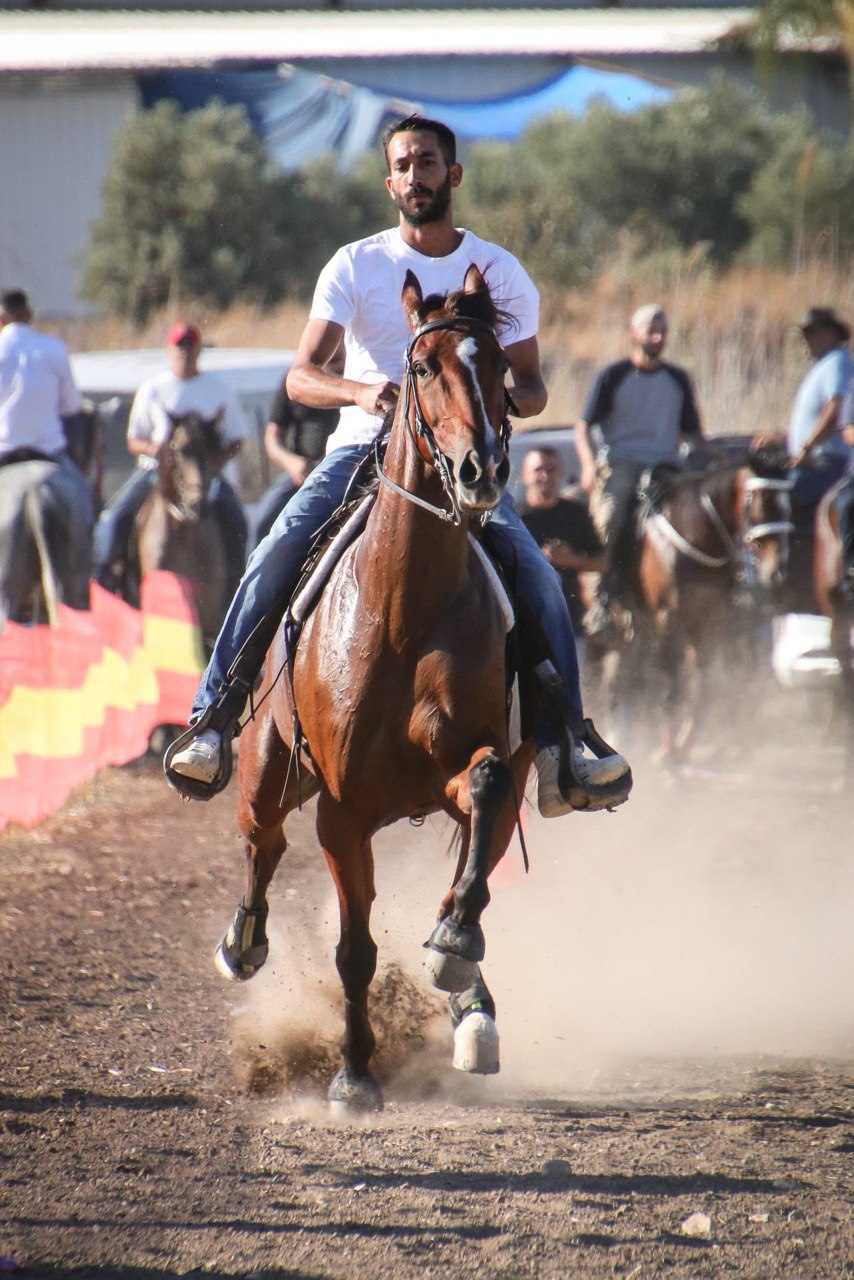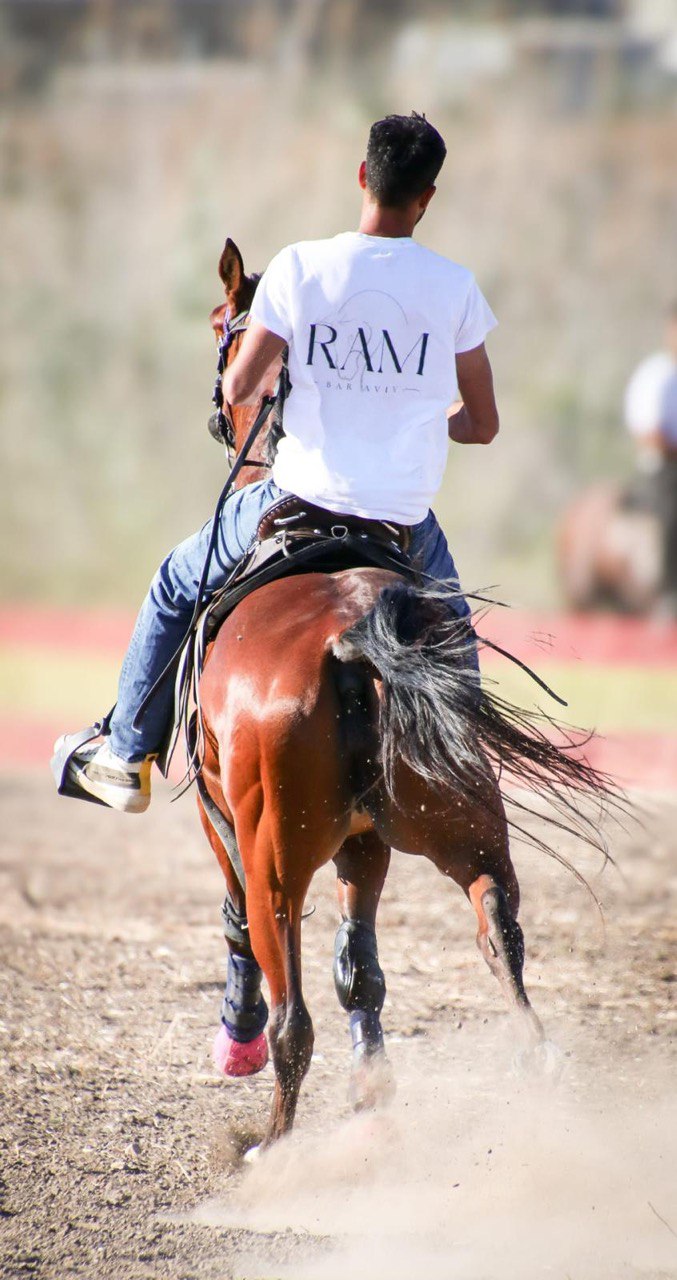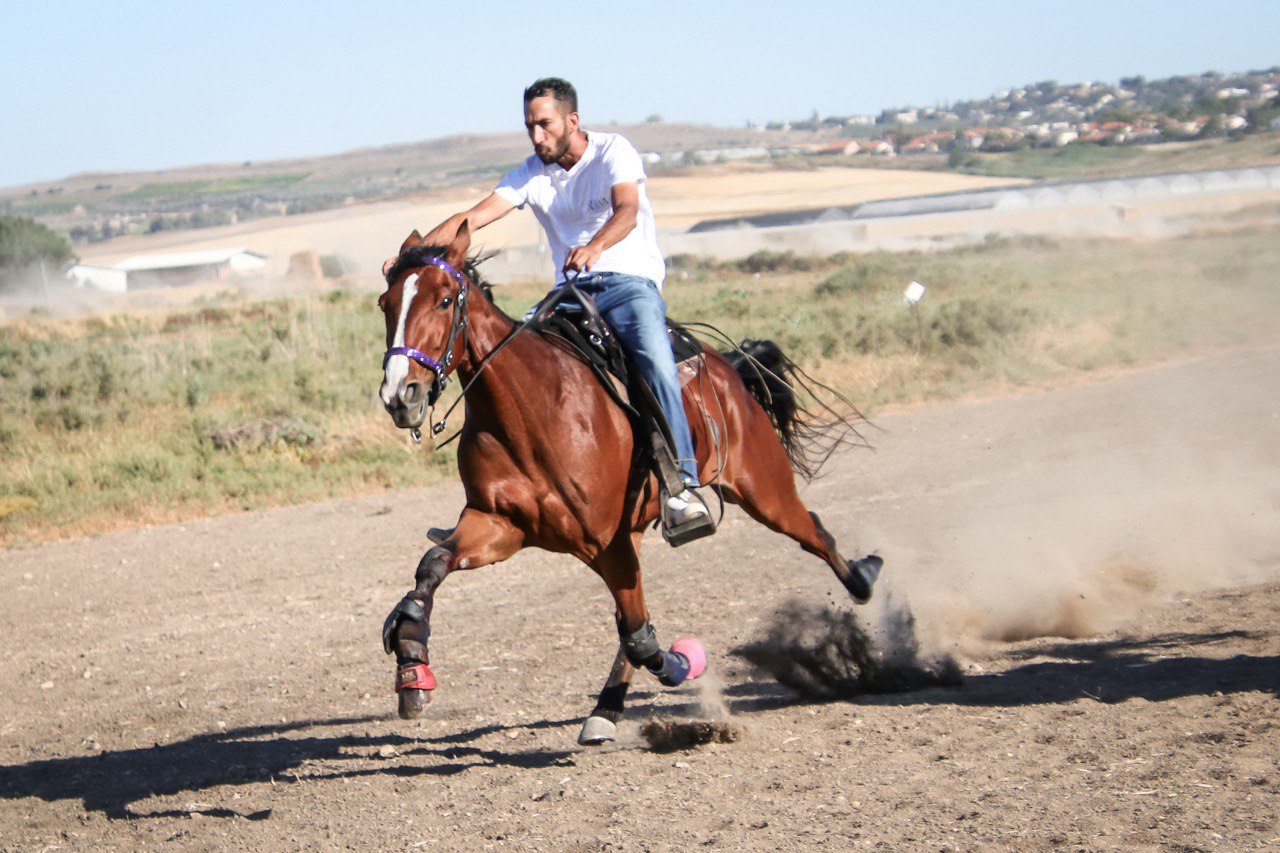Here at Ram Bar Aviv, we aim to transform the standards of horse excellence by prioritizing the
happiness of our equine companions in every aspect of our operations, starting from their steps on our
stables to their post-race endeavors. We envision a tomorrow where each Thoroughbred, Arabian, Tennessee
Walking Horse, and every other breed entrusted to our care experiences a purpose-driven and
compassionate journey filled with fulfillment, whether on the racecourse, within initiatives, or during
their well-suited retirements.
We think that real horsemanship involves finding a harmony between achieving the performance and showing
deep empathy towards the horses we work with. By creating training programs that consider each horse's
breed and temperament while aligning with their individual goals and needs, we aim to establish a bond
of trust in our partnership with the horses. Our training covers everything from groundwork to advanced
track conditioning, as well as specialized western and therapeutic riding techniques. Our successful
methods are designed to produce tangible results that resonate through every powerful and confident
stride taken by the horse.



Looking to turn your horse into a world-class competitor?
If you want to maximize your horse's capabilities, Ram Bar Aviv is your go-to place! Our goal is to set
the benchmark for racehorse training and care by 2030 and inspire others to join our journey towards
excellence in equine welfare and performance goals with us. We constantly try to pave the way for a
future where horses flourish and riders evolve while honoring the essence of the horse in each step they
take. Our Services include:
Training and Conditioning:
Customized Training Plans - Developing individualized training programs based on the
horse's
temperament, physical condition, and racing goals.
Building Fitness and Stamina: Employing different conditioning methods, such as slow-speed long-distance
conditioning (endurance building) and high-speed conditioning (interval training for anaerobic
capacity), to enhance the horse's physical abilities and stamina.
Refining Racing Skills
- Training the horse for speed, agility, starts, and finishes, including gate training, leading changes,
and speed work.
Addressing Behavioral Issues: Identifying and correcting behavioral problems like resistance, fear, or
aggression through appropriate training techniques and behavioral modification strategies.
Horse Care and Management:
General Care - Providing daily care, including feeding, bathing, grooming, and cleaning
stalls.
Health and Well-being Monitoring - Observing for signs of discomfort, illness, or injury,
and
coordinating with veterinarians and other equine professionals for medical needs.
Nutrition and Diet - Overseeing the horse's diet and providing recommendations for proper
feeding and
care.
Addressing Behavioral Issues - Identifying and correcting behavioral problems like
resistance, fear, or
aggression through appropriate training techniques and behavioral modification strategies.
Waste Management and Stable Maintenance: Aiding with maintaining the cleanliness and order
of the stable
environment.
Race Preparation and Strategy:
Race Planning and Entry - Determining which races a horse will enter, in consultation with
the owner.
Race Day Preparation - Overseeing final preparations to ensure the horse is ready to race,
including
checking track conditions and advising jockeys.
Jockey Communication - Working with jockeys on tactics and race strategy.
Communication and Collaboration:
Working with Owners - Communicating with owners about the horse's progress, training plans,
and race
schedules.
Collaboration with Equine Professionals - Working with veterinarians, farriers, and other
professionals
to ensure the horse receives comprehensive care.
Other Potential Services:
Riding Lessons - Some trainers may also offer riding lessons.
Horse Transportation - Arranging or providing transport to and from races or training
facilities.
Breaking and Starting Young Horses - Beginning the training process for young, untrained
horses.
Uncover the impact that top-tier training can have on your horse’s development by enrolling in programs with Ram Bar Aviv.
Racehorse Training Process
At Ram Bar Aviv, our goal is twofold — providing superior training, centered around horses to nurture champions, and ensuring the welfare of every horse under our supervision. We uphold a standard of excellence fueled by empathy and the conviction that ethical horsemanship is paramount.
Experience the impact of premier training firsthand by scheduling your session today for your horse’s successful future tomorrow!

Breaking in the Horse:
Lead training - Teaching the horse to be handled and follow basic commands like
dropping its
head and backing up while on a lead. Lunging: Getting the horse used to running in a circle in a
circular pen, simulating the track environment.
Acclimatization to Track - Gradually introducing track like a roller, saddle pad,
and saddle,
allowing the horse to get accustomed to pressure and weight on its back.
Bit Training - Training the horse to use a bit.
Reining - Using long reins to guide the horse to turn left and right.
Adjusting to Carrying Weight - Helping the horse get used to carrying a rider by
gradually
introducing the rider's weight.
Performing Basic Training:
Riding slowly in circles - Getting the horse comfortable with carrying a rider and
moving at a
moderate pace in a circular paddock.
Teaching lead changes - Training the horse to switch its leading leg to avoid
fatigue during
races.
Transitioning to larger enclosures - Moving the horse to bigger areas to adjust to
a larger
environment similar to a racetrack.
Training in open areas - Guiding the horse to canter and gallop in open fields or
on trails to
build speed and stamina.
Cooling down - Cooling the horse down after training sessions.
Wrapping legs - Wrapping the horse's legs for protection during workouts.
Building Stamina and Speed:
Daily aerobic training - Engaging the horse in daily exercise at various gaits
(walk, trot,
canter) to build fitness.
Practicing at different furlong speeds - Experimenting with various speeds during
training, from
jogging to galloping, and eventually working up to racing paces.
Gradual speed increase - Slowly increasing the horse's speed and distance during
training,
starting at a controlled pace and gradually building up to race distances.
Weekly fast-paced runs - Having the horse run at a very fast pace for a measured
distance to
gauge speed and stamina, typically around 12 seconds per furlong.
Cooling down - Cooling the horse down after fast work.
Transitioning to the Racetrack:
Acclimating to the stall enclosure - Introducing the horse to the starting gate at
the racetrack
and getting it comfortable with the sounds and movements of the gate.
Training with other horses - Practicing running with other horses at the racetrack
to get the
horse used to a crowded environment.
Registering for races - Entering the horse in appropriate races to begin its racing
career.
Publishing workout information - Providing workout details to race administrations.
Administrative And Management Duties Include:
- Supervising stable staff
- Communicating with horse owners
- Developing race plans and strategies
- Planning and supervising daily training and exercise routines
- Managing the horse's nutritional needs and feeding programs
- Keeping detailed records of training, health, and racing history
- Monitoring the horse's health and consulting with veterinarians
